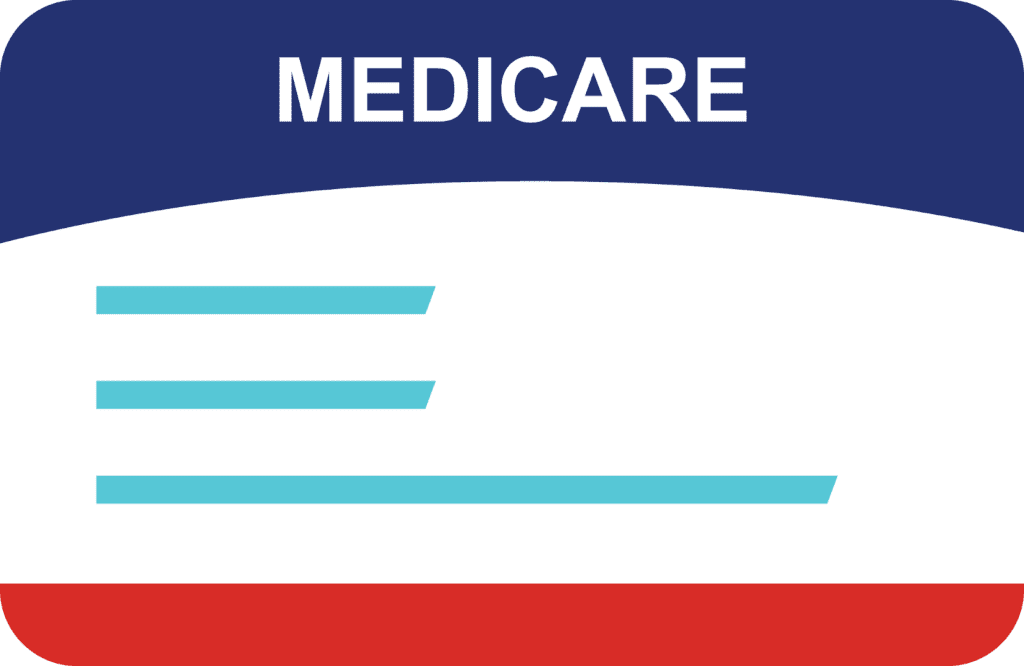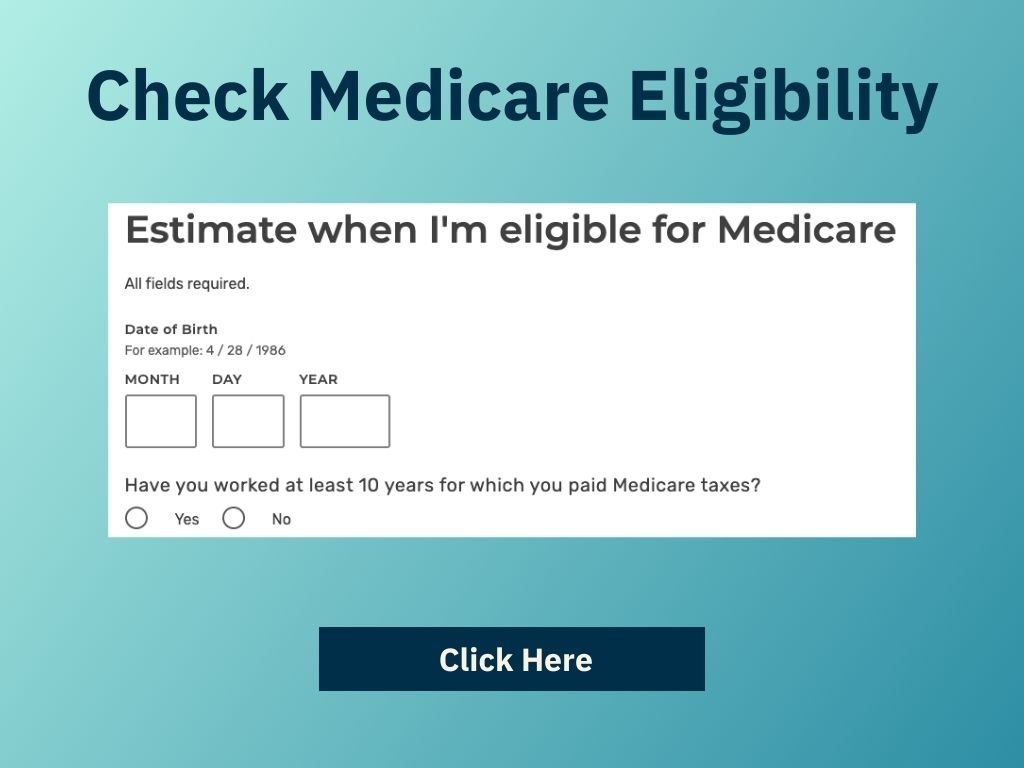Figuring out the parts of Medicare can be both intimidating and time-consuming, especially if you have been confusing the different Medicare parts with Medicare plans.
But, it doesn’t have to be:
You can learn about the different parts of Medicare without pulling out all your hair and once you have learned each part, they will pretty much always be the same.
In this guide today we will go over how each part works, why they are different, and how to know which parts you do or don’t need.

See Current Costs for Part A and Part B
What Is Medicare
The program was established in 1965 as a federal government program that offers health insurance if you are 65 or older, under 65, and received Social Security Disability Insurance or people who are under the age of 65 and have End-Stage-Renal Disease, also known as ESRD.

A federal agency, known as CMS or (Centers for Medicare & Medicaid Services, is responsible for running the program. According to CMS, approximately 99% of Medicare beneficiaries will qualify for no premium Part A coverage. To check your Medicare eligibility feel free to use the tool below that is provided directly by Medicare.

Program benefits are funded by Social Security and Medicare taxes that you pay on your income, from premiums that people pay who have Medicare and as part of the federal government’s budget.
Once you become eligible to enroll, you will start hearing about different parts of Medicare which we discuss below.
The Different Medicare Parts
There are four main parts, and as we discussed earlier, they can be confusing.
Each part will play its role in your journey and understanding the differences can save you both money and heartache.
In some instances, it makes a lot of sense to also consider purchasing separate Medicare Supplement Plans aka Medigap Plans to fill in the gap where Medicare does not.
Medicare Part A (Hospital)
The first part is Part A, which is your hospital insurance.
Your hospital insurance will cover things like the cost of hospice, home health care, skilled nursing facility stays, or even semi-private rooms for stays.
Part A will also cover blood transfusions requiring more than 3 pints of blood.
And guess what:
If you have worked for at least 10 years in the United States, this benefit is usually free.
When you think about anything revolving around a hospital stay, think of Part A.
Nursing Home Coverage
If you have a qualifying hospital inpatient stay then Part A will cover a skilled nursing facility stay (SNF).
In order to qualify for SNF care, your stay has to be a minimum of three days and must be provided at a Medicare-certified facility.
Approved charges for covered skilled nursing care cover, but are not limited to:
- Skilled nursing services
- Semi-private room
- Medical social services
- Meals
- Rehab services, if they are medically necessary to treat your illness
- Medications received while in SNF care
- Medical supplies and equipment used in SNF
- Ambulance transportation to the nearest provider
- Dietary counseling
Remember, your doctor has to certify that you need daily skilled care that you cannot receive at home.
Hospice Coverage
If you have been diagnosed with a terminal illness and are only given six months or less to live, you can get hospice care.
The primary focus of the hospice is to make you as comfortable as possible while you are dealing with your illness, there is no focus on curing your disease.
Before a hospice stay is covered, you must meet all of the following conditions:
- You must be enrolled in Part A.
- Your doctor must certify that you are terminally ill and have six months or less to live.
- You must agree to give up curative treatments for your terminal illness.
- You must receive hospice care from a Medicare-approved hospice facility.
Part A hospice care is usually received in your home and it may include:
- Doctor services
- Nursing care
- Pain relief medications
- Social services
- Durable medical equipment
- Medical supplies
- Hospice aide services
- Homemaker services
- Physical and occupational therapy
- Dietary counseling
- Short-term inpatient care
- Short-term respite care
If you are under hospice care, Part A will sometimes cover some costs that Medicare normally does not include, like spiritual and grief counseling.
Inpatient Care
Inpatient care can be covered for places like
- Participation in a qualifying clinical research study
- Critical access hospitals
- Inpatient rehabilitation facilities
- Long-term care hospitals
- Mental health care
- Acute care hospitals
Keep in mind that Part A does not cover a private room unless it is considered medically necessary.
Home Health Care
You also have home health care benefits that are covered when considered to be medically necessary and get ordered by your doctor.
These home healthcare services can include:
- Physical therapy
- Speech-language pathology services
- Part-time or intermittent skilled nursing care
- Part-time or intermittent home health aide services
- Occupational therapy
- Medical social services
Keep in mind that Part A of Medicare will not cover any type of 24-hour home care, meals, or homemaker services if they aren’t related to your treatment.
It also won’t cover things like help with bathing and dressing, if that is the only care that you need.
Your home health care must be provided by a Medicare-certified home health agency, and a doctor must certify that you are home-bound.
The Three Most Commonly Asked Questions About Medicare Part A
Medicare Part B (Medical)
The next part of Medicare is going to be Part B, this part is responsible for your doctor’s visits.
It is going to mainly be used for outpatient services that are considered to be medically necessary.
It is going to include coverage for things like doctor office visits, preventative care, lab tests, chemotherapy, ambulance rides, diagnostic imaging surgeries, or even kidney dialysis.
Medicare Part B is just as important as Part A and together they make up coverage for both at the hospital and outside of the hospital.
Part B Premiums
There is a chance that your Part B Medicare premiums may go up every year and there is no way to figure out by how much.
For 2025 the standard monthly premiums for Part B will be $185.00 and if you have Social Security benefits it will be deducted from your benefits automatically. Keep in mind that if you are a higher income earner, then you will pay more for your Part B premiums. You can read about the higher-income earner category here.
In addition, you can use our online IRMAA Calculator to see if you will have to pay more for your Part B premium.
Part B Coverage
There are a ton of things that you are covered for under Medicare Part B so we put together a list of the items.
Remember that you need to look at the specifics of how each benefit will work when you sign up for your Part B coverage.
Ambulance Services
Cardiac Rehabilitation
Chiropractic Services
Diabetes Self-Management Training
Diabetes Supplies
Durable Medical Equipment
Emergency Room Services
Eyeglasses
Hearing & Balance Exams
Kidney dialysis services and supplies
Mental health care (outpatient)
Occupational therapy
Outpatient medical and surgical services and supplies
Physical Exams
Physical Therapy
Prescription Drugs (limited)
Prosthetic and orthotic Items
Pulmonary rehabilitation
Rural health clinics and free or low-cost health clinics
Screenings (tests and scans)
Second surgical opinions
Shots
Smoking cessation (help to quit smoking)
Speech therapy
Telehealth
Transplants and immunosuppressive drugs
Urgently needed care
3 Questions You Should Ask About Medicare Part B
Medicare Part C (Medicare Advantage)
So, Part C of Medicare is different than Part A & Part B in that it is actually you obtaining your Medicare benefits through private insurance companies.
Part C is most known as Medicare Advantage.
These Advantage plans are private health plans that you can sign up for instead of Original Medicare.
You will still get Parts A & B of Medicare, and some of them come with Part D as well, all from one private insurance company.
These Advantage plans usually offer a few more benefits than original Medicare; however, some of them will carry an additional monthly premium.
If you are considering an Advantage plan, then you should also think about if you would prefer a Medicare Supplement plan as well.
Types of Medicare Advantage Plans
Knowing the different types of Advantage plans is important, so, below we put together a list of the different types:
HMO (Health Maintenance Organization Plan)
Lets you see doctors and other health professionals who participate in its provider network. If your doctor is already in the network, it could be a good option because you tend to pay less out-of-pocket with in-network doctors.
PPO (Preferred Provider Organization plan)
Covers both in- and out-of-network providers, giving you the freedom to choose any doctor that accepts Medicare assignment, which can work if you prefer that kind of flexibility.
- PFFS (Private Fee-for-Service plan): The plan determines how much it will pay providers and how much you must pay when you get care. The treating doctor has to accept the plan’s payment terms and agree to treat you. If the doctor doesn’t agree to those terms, then the PFFS plan will not cover services through that doctor.
- SNP (Special Needs Plans): These are especially for people who have certain special needs. The three different SNP plans cover Medicare beneficiaries living in institutions, those who are dual-eligible for Medicaid and Medicare, and those with chronic conditions such as diabetes, End Stage Renal Disease (ESRD), or HIV/AIDS. This type of plan always includes prescription drug coverage.
- HMO-POS (Health Maintenance Organization – Point of Service plan): Covers both in- and out-of-network health services but at different rates. You pay less out-of-pocket when you go to in-network doctors, labs, hospitals, and other health care providers.
- MSA (Medical Savings Account plan): Includes both a high deductible and a bank account to help you pay that deductible. The amount deposited into the account varies from plan to plan. The money is tax-free as long as you use it on IRS-qualified medical expenses, which include the health plan’s deductible.
Medicare Part D (Prescription)
The last part of Medicare is going to be Part D, this is going to help cover and lower the cost of your prescription drugs.
Unlike Parts A & B, you don’t enroll in Part D through Social Security, instead, you will go through a private insurance company for your prescription plan.
Each plan will function differently depending on the insurance company, and once you sign up for coverage you would be considered enrolled in Part D.
These plans are optional and will come with an additional monthly premium that you will have to pay the insurance company directly.
If you are taking any prescriptions it is probably worth it to have a plan that will help you with co-pays in regards to prescriptions.
Keep in mind that new legislation passed in 2022 will start to lower your overall out-of-pocket costs even more over the next few years.
Medicare Parts vs Medicare Plans
The most confusing part of Medicare can come from trying to figure out Parts vs Plans.
This is because Parts and Plans are both Letter Based.
To clear things up, just remember that there are only 4 parts to Medicare and that Medicare Plans are actually Medicare Supplement Plans also known as Medigap plans.
Medicare Supplement Plans are offered through private insurance companies and are Supplement to Original Medicare.
They pick up areas when Medicare falls short in coverage.
You still have to be enrolled in Part A & Part B of Medicare to qualify for enrollment into a Medicare Supplement plan.
Below we show how Original Medicare (Parts A & B) work with Medicare Supplement Plans:
Taking Action
Now you know the different parts of Medicare and how they work differently from Medicare Plans.
It should be much easier to navigate your way around Medicare and all of its different workings.
For personalized assistance with your Medicare needs, reach out to Senior Benefit Services, Inc. Let us help you make informed decisions for a healthier future.
If you are turning 65 this year or have already turned 65, get enrolled as early as possible because the longer you wait, the more costly getting enrolled can become.
Getting the correct combination of coverage will be essential when it comes to living your best life and staying healthy.
